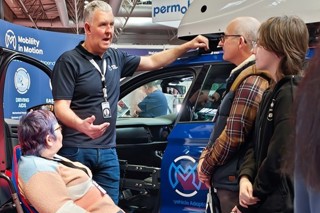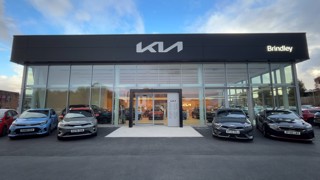By Debbie Kirlew
There is substantial evidence in support of video as a retail sales and communication tool. A report by research group Aberdeen found that websites with video grew revenues 49% faster, benefited from 27% higher click-through rates and enjoyed 34% more web conversions than those without.
With the majority of the purchase journey taking place online, used car videos can provide consumers with a ‘warts and all’ view of a car, while personal videos, where a customer receives a short clip made specifically for them, bring the personality and charisma of the sales executive back into play.
Alistair Horsburgh, CEO of video service supplier CitNow, said the UK has the most advanced personalised video market, with 60% of dealers using video. In that market, integrity is proving key for both sales and aftersales.
“Video is providing the emotional engagement for consumers. A short video presentation is so powerful the consumer almost won’t ignore it. Video still allows people to buy from people,” said Horsburgh.
“Integrity is fast becoming the basis of using video, no longer is it all about return on investment. It’s all about integrity; from that spins a better customer experience and improved profitability.”
“The best sales people are converting 75% of their videos into sales because they listen to their prospects and deliver it in a compact fashion.”
“Video provides complete transparency because the vehicle is filmed at every angle,” said AutosOnShow managing director Adam Price. “There is total openness and consistency and proves a dealership has nothing to hide. We have found vehicles with their own video sell many days faster than those without.”
“Video provides complete transparency and proves a dealership has nothing to hide” Adam Price, AutosOnShow
Price and Horsburgh identify culture rather than technical difficulties or skillset as the biggest obstacle to adopting video. Both suppliers use an app-based system that is designed to be simple and efficient.
Horsburgh said: “The process is stupidly simple, everyone can do it. We spend 90% of our dealer training days talking about the why rather than the how.”
Price said: “We had to de-skill the whole process and take away the fear from DPs. We put the training into the app, so a single download provides everything, whether it is being used for imagery, video or both.”
For those not on board with a bespoke video provider, Lauren Cooke, marketing manager at digital agency Bluesky Interactive, who estimates about a third of its clients utilise video regularly, recommends Microsoft products such as Windows Movie Maker for very basic editing, while other online tools include Go Animate. Bluesky also has an in-house video team, which has been in place for four years, to produce professional films.
Automotive marketing specialists Kee recommends social media as a good place to start with video, using Facebook and Instagram in particular. The company, which is currently developing a car video upload area in its CMS, advises dealers to create content that encourages engagement and as a way to introduce staff and the business, such as test drive videos, especially for new models, and ‘how to’ videos.
Account manager Amy Soper said: “There are so many approaches to video, from bespoke informational videos to those with the potential to go viral. ‘Just landed’ videos, when a new model has arrived in the showroom, are quick wins.”
“We could see video was on its way to being big in the future of car sales” Ian Godbold, Cambria Automobiles
Cooke also pointed out video’s role in fulfilling search engine optimisation requirements, as Google continues to give increasing weight to video in searches. She also highlighted the social aspect.
She said: “It encourages customers or prospects to interact with you, and is more interesting and appealing than an image or text alone. Done well, videos can even go viral.”
Cooke gave the example of a Bluesky’s client, Alan Day Volkswagen, whose ‘Happy’ video, produced two years ago to the popular Pharrell Williams song, attracted more than 8,000 viewings on YouTube. CitNow said its videos were shared more than 218,000 times in 2015, 95% of them on Facebook.
When producing the videos, experts advise taking an approach that is genuine and professional, but not too polished.
Horsburgh also warned against being “cheesy” and overselling. Soper said: “Consumers don’t expect a polished piece of film. If it’s too slick, you risk consumers thinking you are not genuine. It’s a balance between being natural and believable and being on-brand and professional.”
Cooke agreed: “There is also an argument for the more human, slightly flawed videos being used to show the real, believable face of the business.”
Price added: “If the video looks poor, customers are not going to watch it and if it’s too slick it won’t appear genuine.”
Cambria Automobiles began using video following the transformation of its internet presence in 2011 which saw the appointment of web specialists in each dealership to achieve a consistent standard of used car images.
Marketing director Ian Godbold said: “We wanted to improve the quality of the experience online, but we also wanted to improve conversion rates, increase appointments and reduce the number of no-shows. We could see video was on its way to being big in the future of car sales.”
The group focused on SEO content with video as a core element and partnered with AutosOnShow. Videos are now widely used on its website – to showcase used cars, from sales executives to customers to highlight specific cars – and it is now gaining ground in the workshop.
Godbold said dwell time on the website has doubled and the number of visitors taking an additional step after browsing vehicle information pages – engaging in live chat, making a phone call or submitting an internet enquiry – has grown by 140%, while 45% of consumers who enquire have viewed a video on Cambria’s vehicle page.
“We have seen a year-on-year increase in the amount of video hours watched, in March alone it amounted to 306 hours,” said Godbold.
“You don’t have to be a tech-whizz to do it. Our sales associates are using it as a sales tool and understand its value. We want our associates to naturally use video in the way you wouldn’t think twice about sending an email.”
Jardine Motors Group commercial director Jason Cranswick said it has seen ‘tangible’ benefits from implementing a video policy across aftersales departments in its multi-franchise network, such as an increase in customer satisfaction ratings and more eVHC red work conversions.
The group partnered with CitNow 18 months ago and used the system in about 25-30 of its 75 businesses, but an average month saw just 200 aftersales videos produced. By comparison, in April this year, it produced 18,000 aftersales videos.
“It just became infectious,” said Cranswick. “It was almost month on month from February 2015 that the momentum just kept building.”
It wasn’t without its obstacles, Cranswick explained: “We were asking technicians to present and that was something they weren’t comfortable doing. Our approach was to ‘have a go’ and no one was judged.”
The best videos were uploaded to the group’s intranet. One of the most memorable was the wise-cracking technicians who filmed their ‘elf’ check in costume at Christmas.
Their approach paid off, said Cranswick: “Our aim is to have all of our dealers in the top 10% of their respective manufacturer CSI leagues and we are now much closer to achieving that goal with higher levels of satisfaction than a year ago. The opposition to red work has also halved compared to a year ago and that’s worth a significant amount of money.”
The future of video
While CitNow had predicted that ‘the wow factor’ of video would wear off, it said customer ratings of its videos indicate that has not been the case to date. However, it said presentation training is likely to become essential, with some switched-on sales managers already using their best videos as presentation training tools.
Horsburgh predicted that manufacturers would migrate their mystery shop process to video analysis. CitNow said sales managers now ask about video experience and individual analytics when recruiting and some even ask candidates to undertake a video walk-around as part of the interview process. By 2017, CitNow predicted that videos for inbound vehicle enquiries and VHCs will relate to less than 50% of its content. It expects to see 30% of videos in areas such as prospecting, finance renewal, how-to’s, thank you’s, new car off the transporter, unveiling of the customer’s new car, follow-up and post delivery satisfaction videos.
Price believes the process will become more tailored. For example, one of AutosOnShow’s dealer clients has slightly different criteria when filming each of its models depending on specific features of the car.
“Tailoring is the future. The videos produced look like dedicated assets and the quality looks like a very slick production yet it has taken five minutes,” said Price.
Meanwhile, at Cambria, Godbold has already put moving the CSI process to video on the group’s digital ‘roadmap’.
According to Horsburgh, every dealership will be using video by 2018 and those businesses that are not using the medium now will be left behind.
Price thinks the sector is just at the start of the video revolution and he foresees a day when virtual reality (VR) will be a common way of selling cars.
He said: “In the near future, VR headsets will be in most households and people won’t even need to come into the dealership to view the car. It will be so realistic; it will be like you’re actually there.
“There was a company at NADA which is working on this concept, it’s not ready, but it’s not far away. In five to 10 years, people will be using this technology to buy their next car.”
The carmaker’s perspective – Volvo
When AutosOnShow produced a bespoke solution to achieve consistent imagery for Volvo Car UK’s 109 dealers operating its Selekt approved-used programme last summer, Bruce Greenwood, national used car programme manager, was quick to progress to video, all from the same app.
Following a pilot scheme, seven dealers are now utilising video with a further 20 set to go live. By the end of August, Greenwood expects half the network to have video available.
He said: “Video is becoming increasingly important and there is a consumer expectation that the vehicle should be presented more dynamically.”
Last year Volvo used car sales increased 9% against a national average of 4%, with a more impressive result for retail alone, up 13% on last year. Although the increase cannot be attributed to its visual assets alone, Greenwood is ‘confident the images had an impact’.
The app enables Greenwood to pre-set parameters ensuring brand standards are maintained and the software guides users to take pre-selected images and film angles, which are automatically processed and uploaded.
Greenwood has delivered some of the video sessions for dealers and said: “Understanding how to take the images and film the video takes two practices, it really is that easy.”




















Login to comment
Comments
No comments have been made yet.